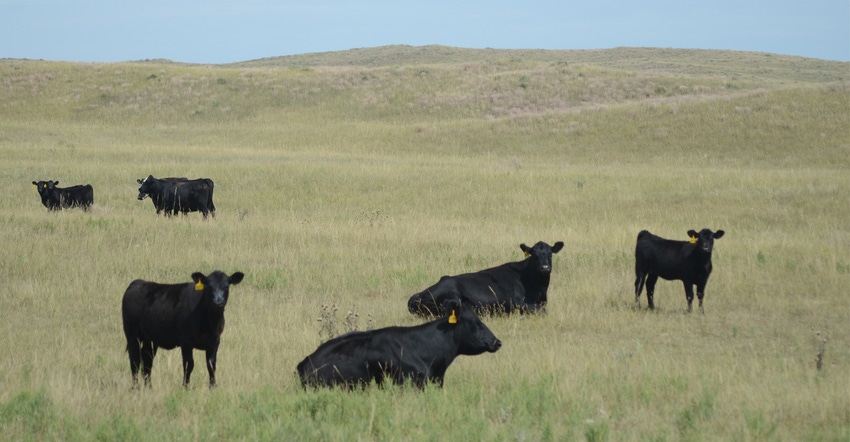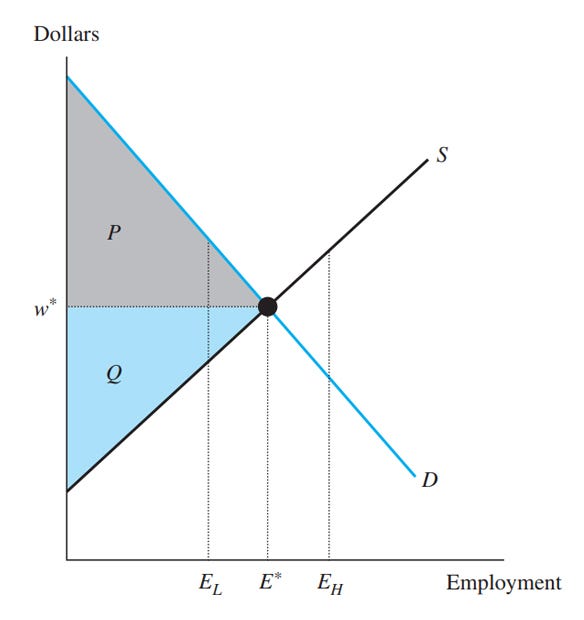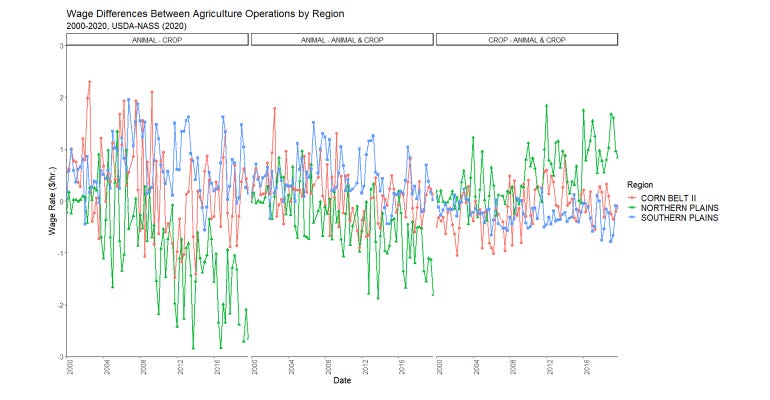March 3, 2020

By Elliott Dennis
One of the most reoccurring issues brought up by Nebraska livestock producers is the rural labor shortage. Labor shortages often are complex issues where operations demand labor, and the workforce supplies labor.
Using employment and wage data collected by the USDA's National Agricultural Statistics Service, each quarter we can determine some potential drivers of the perceived labor shortage and some potential remedies.
Each May and November, NASS solicits responses from farms with $1,000 or more in annual sales value to publish the Farm Labor Survey. This survey provides quarterly estimates of the number of workers hired and wages paid, and is categorized by farm location, type and size.
Separating these trends out by geographical region further reveals how observed changes are not ubiquitous.
Economic theory on labor markets
Before we jump into the data, we first need some theory on how labor markets work. Economists have developed frameworks about labor supply and demand, which I will use as a framework for this discussion.
To begin, a labor market is said to be in equilibrium when supply of labor (S) intersects labor demand (D), and employed workers (E*) are employed at an equilibrium wage (w*) (see chart below). The triangle P is the benefit operations receive from employing labor, and triangle Q gives the benefit workers receive from supplying labor.

Under this scenario, there is no unemployment because the number of people looking for jobs equals the number of people offering jobs. People who are not working also are not looking for work at the going wage.
Of course, many of these people would enter the labor market if the wage rose (and many would withdraw if the wage fell). Labor shortages occur when employers demand more labor than is currently supplied. To attract labor, firms raise wages, encouraging more labor to enter the market.
The contrary is true as well — a labor surplus results in lower wages, and wage increases as supply decreases.
Number of workers and wage rate
So, what does NASS tell us about the number of workers employed (either short or long term) and the accompanying wage rate? Further, is the Northern Plains (including Nebraska) different from other locations?
Long-term employment is defined as labor that has been hired for more than 150 days. Short-term labor is defined as labor hired for less than 150 days.
Short-term employment in the Northern Plains has remained relatively steady since 2000, but has varied greatly across season and time of year. Long-term employment has risen slightly since 2010.
The Western Corn Belt region has experienced stability in both long- and short-term employment. On the other hand, the Southern Plains has experienced relative stability in short-term employment, but has seen decreasing long-term employment — from about 65,000 workers per year in 2000 to 45,000 per year in 2020.
Nominal wages have risen year over year, but real wages have slightly increased for the Northern Plains and have been constant in the Western Corn Belt. A stable supply of labor and slightly increasing wages indicates that demand for agriculture labor in the Northern Plains has been increasing; stable supply and stable wages indicates agriculture labor demand in the Western Corn Belt has been stable.
However, real wages for Southern Plains operations have been slightly decreasing. This indicates, given decreasing supply of labor and falling wages, that the demand for agriculture labor is falling faster than the decrease in labor supply.
So, if aggregate wages are rising slightly for Northern Plains operations and labor participation has been fairly stable, indicating an increasing demand for labor, why have livestock producers struggled to find labor?
This requires a deeper look at differences in labor markets, and subsequently labor rates, between the livestock and crop sectors. To do so, we need to add on to our economic theory we have previously built.
Labor movement between two markets
The livestock and crops industries compete in the rural labor market. Using the economic model described above we can determine how wage can cause labor markets between livestock and crops to adjust.
To simplify the explanation, assume that livestock and crop operations employ workers with similar skills, and that people working in crops could rotate to livestock operations without any difficulty. Now, suppose the wage is higher in crop operations than in livestock.
The question then becomes: Can this wage differential between these two sectors persist and represent a true competitive equilibrium? No. This wage differential (i.e. gap) encourages livestock workers to leave and work on crops where they can earn a higher wage.
As more workers enter the crop market, this causes the crop wage to fall, until long-term wages between crop and livestock markets are equal.
Wage gap across agriculture sectors
Now with this brief understanding of economic theory, we can observe in what locations wage is equalizing between livestock and crop operations and where it is not. Let’s examine the wages between crops, livestock, and crops plus livestock in the Northern Plains, Southern Plains and Western Corn Belt.
The figure below displays the difference in wage rates between animal operations, crop operations and combined animal-plus-crop operations. Between 1987 and 2019, Northern Plains livestock operations have been paying workers a significant wage discount. Before 2010, this discount was about 50 cents per hour.

However, since 2010 this discount has increased to almost $3 per hour. In other words, hired labor could earn $3 more per hour by choosing to work for a crop operation compared to a livestock operation. This discount is not present for Southern Plains or Corn Belt Region operations.
For example, on average a Southern Plains livestock operations paid workers 75 cents more per hour compared to crop operations over the past 20 years. Similar price premiums and discounts patterns, although not as extreme, are observed in the Northern and Southern Plains comparing livestock to combined crop-plus-animal operations. There appears to be some downward pressure of wages for Northern Plains livestock operations.
So, one possible reason for a shortage of livestock workers is that the wage is too low. Higher wages should incentivize workers to leave other occupations, such as other off-farm labor or work on crop operations, and increase the number of nonresponse workers entering the market.
This, in theory, should allow the livestock labor market to stabilize. While this may be true across a large region, local variations will still exist.
Dennis is an assistant professor of livestock marketing and risk management in the Department of Agricultural Economics at the University of Nebraska-Lincoln.
You May Also Like




